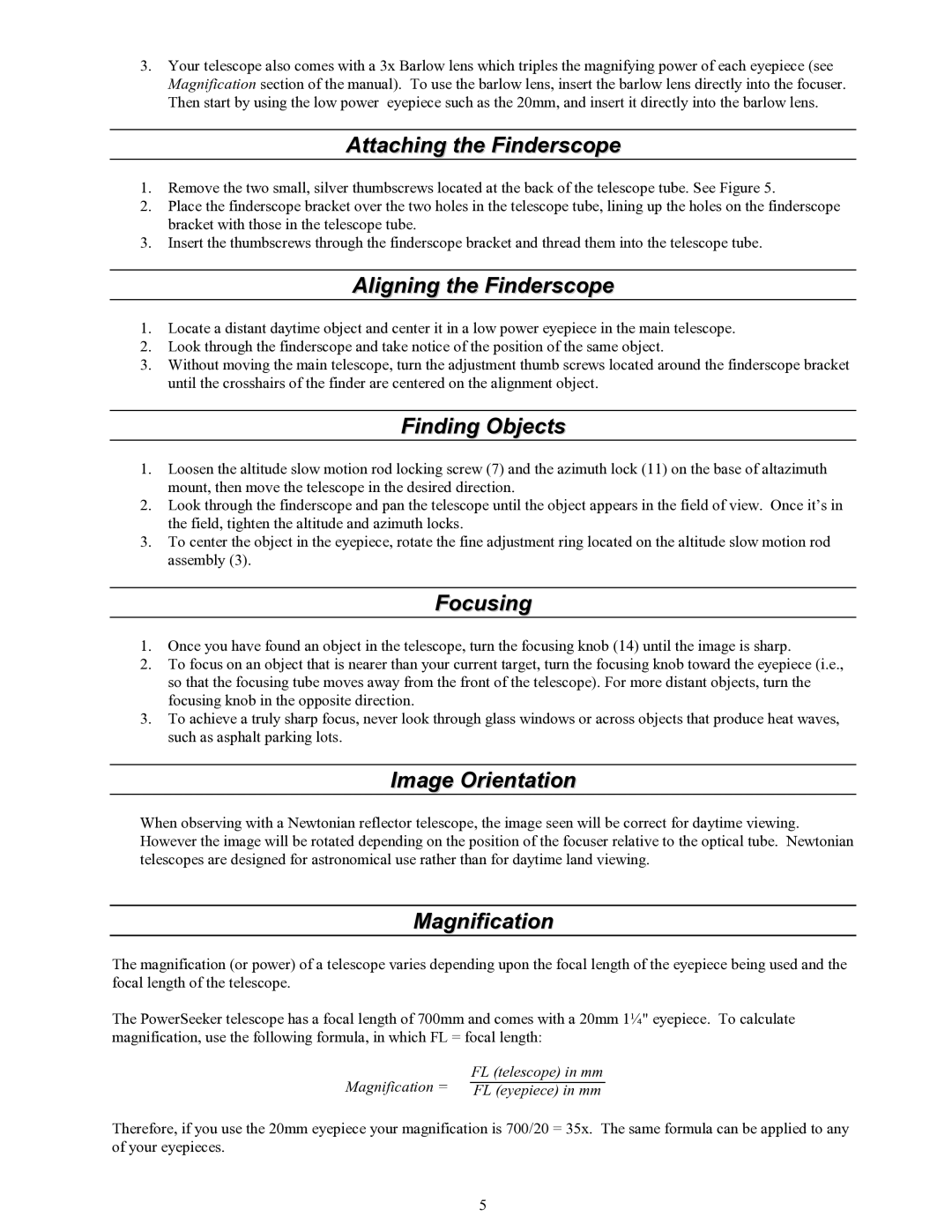76 specifications
The Celestron 76 is a remarkable telescope designed for budding astronomers and enthusiasts alike. This compact and portable device provides an exceptional way to explore celestial wonders, making it a popular choice among amateur stargazers. The Celestron 76 is equipped with a range of impressive features, technologies, and characteristics that enhance the observing experience.One of the standout features of the Celestron 76 is its 76mm aperture, which gathers ample light for clear and bright images of celestial objects. This aperture size is especially beneficial for viewing the Moon's craters, the rings of Saturn, and samples of deep-sky objects such as star clusters and nebulae. The telescope's focal length of 700mm creates a well-balanced view, making it easier for users to locate and track objects in the sky.
The Celestron 76 utilizes a reflecting design, employing a primary mirror to capture light. This technology offers several advantages, including minimal chromatic aberration and a lightweight build, which enhances its portability. Weighing in at just a few pounds, users can easily transport the telescope for stargazing sessions in various locations, whether in their backyard or while on camping trips.
Another appealing characteristic of the Celestron 76 is its simple and user-friendly setup process. It is designed for quick assembly, allowing users to start their observation without extensive preparation. The telescope also comes with a sturdy mount that provides stability during viewing, along with slow-motion control knobs that allow for smooth tracking of celestial objects across the night sky.
Celestron provides a range of eyepieces with the telescope, enabling users to achieve different magnifications depending on their target subject. The ability to swap eyepieces allows for greater flexibility in exploration and can enhance the observing experience. Additionally, the telescope is compatible with various accessories, paving the way for further enhancements and customizations as users expand their astronomical interests.
Overall, the Celestron 76 is a fantastic entry-level telescope that combines portability, ease of use, and quality optics. It stands as an excellent choice for those embarking on their astronomical journey, providing stunning views of our universe while fostering a passion for stargazing. With its innovative design and thoughtful features, the Celestron 76 continues to inspire exploration and wonder in the night sky.

